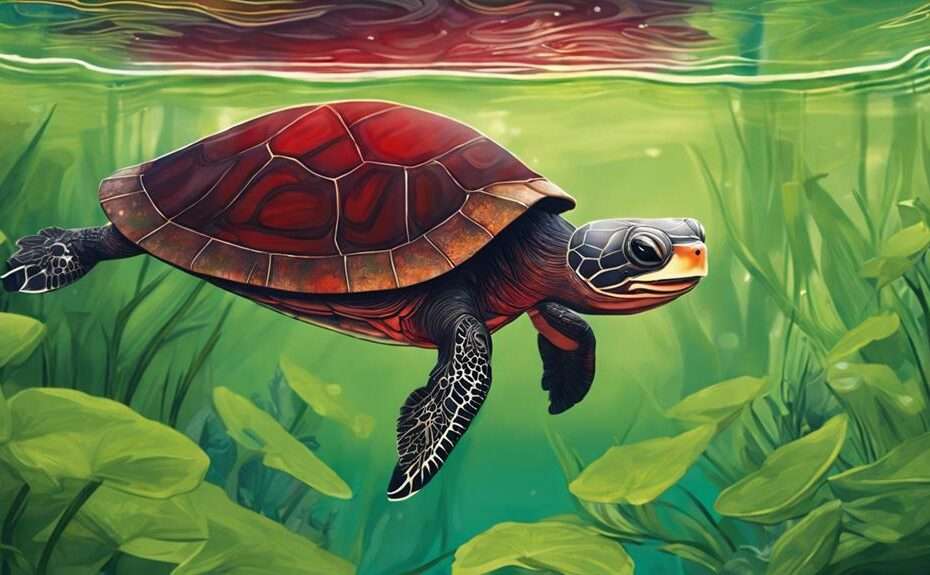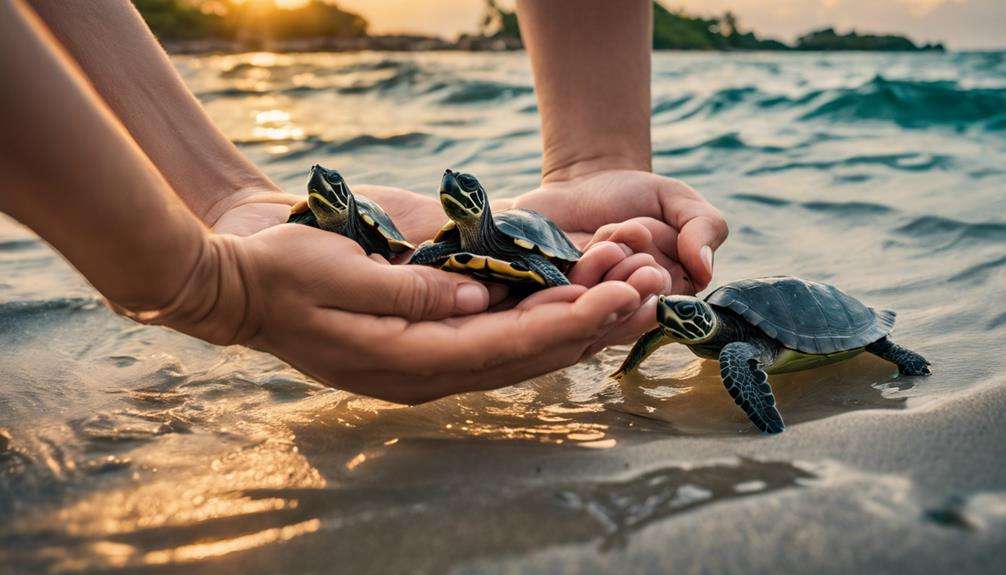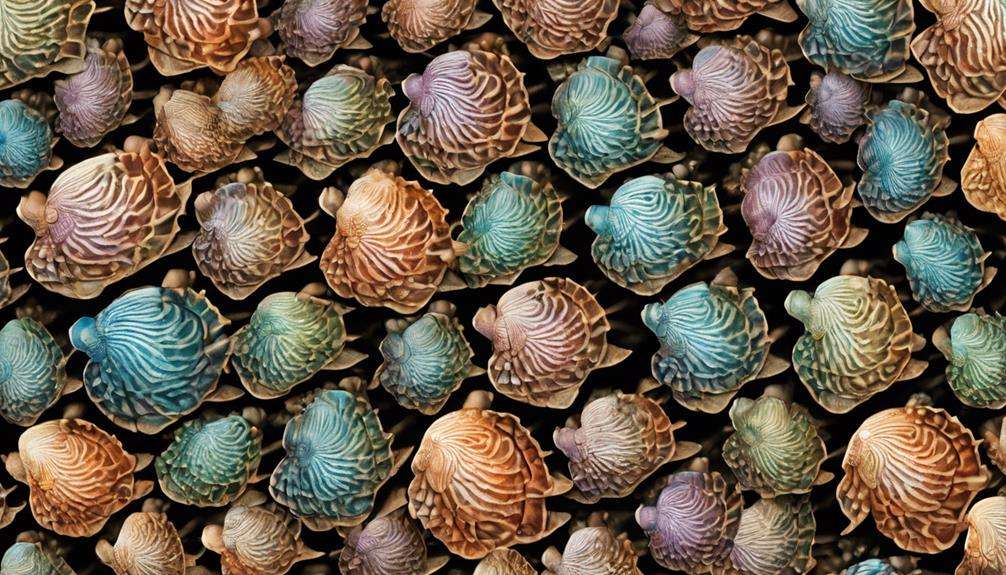Interested in exploring lesser-known turtle species for adoption? Discover unique options like the Spiny Softshell Turtle, Indian Roofed Turtle, and more.
Each species offers a chance to support conservation efforts and make a meaningful impact. Find out how these turtles are making a difference in the world and how you can be a part of their journey to a safer habitat.
Key Takeaways
- Spiny Softshell, Indian Roofed, Yellow-Spotted Amazon, & African Helmeted Turtles are lesser-known species open for adoption.
- Adoption supports conservation, research, and habitat protection for these unique turtle species.
- Chinese Golden Thread, Roti Island Snake-Necked, & Vietnamese Leaf Turtles face critical threats requiring conservation efforts.
- Conservation efforts are vital for safeguarding turtle populations, habitats, and raising awareness about lesser-known species.
Spiny Softshell Turtle
The Spiny Softshell Turtle, characterized by its flat, leathery shell adorned with spiny projections, is a remarkable aquatic species native to North America. These turtles are available for symbolic adoption programs that support conservation efforts. By symbolically adopting a Spiny Softshell Turtle, you contribute to protecting their habitats and ensuring their survival in the wild.
When you symbolically adopt a Spiny Softshell Turtle, you help fund research projects aimed at understanding and preserving this species. Your contribution may support initiatives focused on conserving freshwater ecosystems, where these turtles play an essential role in maintaining biodiversity.
Symbolically adopting a Spiny Softshell Turtle also raises awareness about the importance of protecting vulnerable species like these unique turtles. These programs often provide educational materials and updates on conservation efforts, allowing you to learn more about the challenges these turtles face and the actions being taken to safeguard their future.
Indian Roofed Turtle
The Indian Roofed Turtle, scientifically known as Pangshura tecta, showcases unique shell patterns that resemble a roof, distinguishing it from other turtle species. This turtle thrives in freshwater environments such as ponds and slow-moving rivers, where it feeds on a varied diet including aquatic plants, insects, crustaceans, and small fish.
Due to threats like habitat destruction and illegal pet trade, the conservation status of the Indian Roofed Turtle is currently classified as Vulnerable, emphasizing the need for conservation efforts to safeguard this species and its habitat.
Unique Shell Patterns
With a shell pattern resembling roof tiles, the Indian Roofed Turtle (Pangshura tecta) stands out as a unique species among lesser-known turtles. This distinctive feature makes it a fascinating choice for symbolic adoption, allowing individuals to support conservation efforts for this vulnerable species.
The shell of the Indian Roofed Turtle varies in color, ranging from dark brown to olive green, adorned with intricate patterns that resemble the overlapping tiles of a roof. These patterns not only serve as camouflage in their freshwater habitats in India, Bangladesh, and Nepal but also add to the aesthetic appeal of this species.
Habitat and Diet
Nestled within the diverse ecosystems of South Asia, the Indian Roofed Turtle thrives in freshwater habitats teeming with aquatic life. This turtle species, Pangshura tecta, can be found in rivers, ponds, and marshes where it feeds on aquatic plants, insects, small fish, and crustaceans.
Its omnivorous diet reflects its adaptability to a variety of food sources. Preferring slow-moving or stagnant waters, the Indian Roofed Turtle enjoys basking in the sun on rocks or logs. With a distinctive keeled shell and dark brown to olive-green coloration, it blends seamlessly into its environment.
However, this species faces threats from habitat loss due to human activities, highlighting the urgent need for conservation efforts to protect its natural homes.
Conservation Status
Amidst the challenges faced by the Indian Roofed Turtle, its Endangered status on the IUCN Red List underscores the urgent need for conservation actions.
This species, scientifically known as Pangshura tecta, is native to India, Bangladesh, and possibly Nepal. The primary threats to the Indian Roofed Turtle include habitat destruction, pollution, and illegal wildlife trade.
Conservation efforts are essential and primarily focus on habitat protection, implementing anti-poaching measures, and educating local communities. The Indian Roofed Turtle holds significant importance in maintaining the balance of freshwater ecosystems.
Its Endangered classification highlights the critical state of this species and emphasizes the importance of immediate and effective conservation measures to safeguard its survival for future generations.
Yellow-Spotted Amazon River Turtle
The Yellow-Spotted Amazon River Turtle, scientifically known as Podocnemis unifilis, showcases unique shell patterns with striking yellow spots on its head and neck.
Conservation efforts are vital to safeguard this species from threats like habitat loss, hunting, and the pet trade.
Understanding the role these turtles play in dispersing seeds and controlling insect populations highlights the importance of preserving their populations in the wild.
Unique Shell Patterns
With its dark-colored shell adorned with distinctive yellow spots, the Yellow-Spotted Amazon River Turtle stands out as a visually striking species among its counterparts. These unique shell patterns serve both a functional and aesthetic purpose for the turtles.
The dark coloration of their shell helps them absorb heat from the sun, aiding in thermoregulation, while the yellow spots provide camouflage in their natural habitat. The irregular arrangement of these yellow markings adds to the beauty and individuality of each turtle.
This species' shell patterns not only make them easily recognizable but also play a role in their survival in the wild. Understanding and appreciating the significance of these unique shell patterns can deepen your admiration for the Yellow-Spotted Amazon River Turtle.
Conservation Efforts
Conservation efforts for the Yellow-Spotted Amazon River Turtle focus on safeguarding its populations and habitats against various threats in the Amazon region. These turtles, scientifically known as Podocnemis unifilis, are important for the ecosystem, dispersing seeds, and controlling insect populations.
However, habitat destruction, illegal harvesting for meat and eggs, and pollution pose significant risks to their survival. Conservation initiatives, including adoption programs, aim to protect the Yellow-Spotted Amazon River Turtles and preserve biodiversity in the region.
African Helmeted Turtle
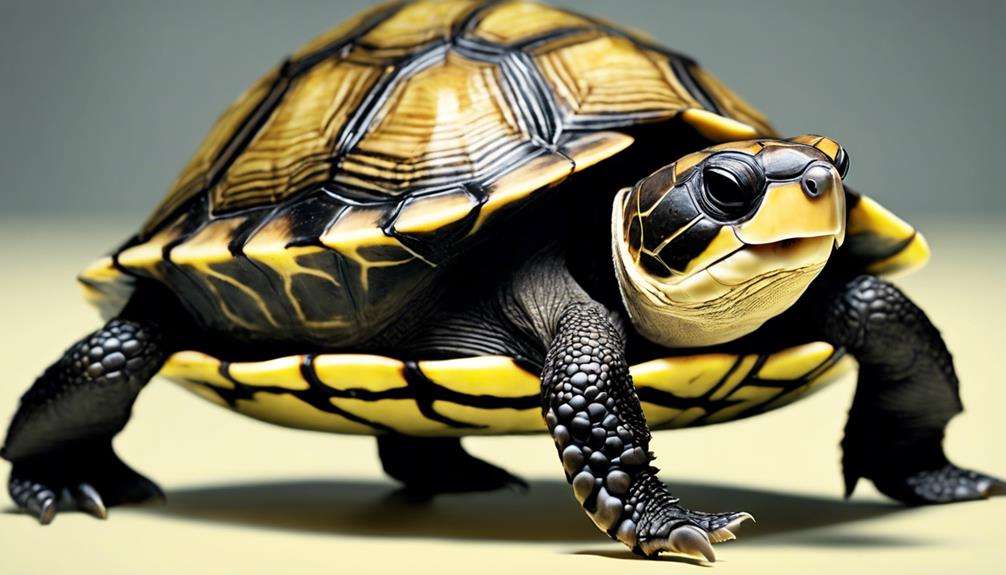
Native to sub-Saharan Africa, the African Helmeted Turtle, also known as the Marsh Terrapin, showcases a distinctive helmet-like shell that provides essential protection in its aquatic habitats.
These small freshwater turtles are popular for adoption due to their manageable size, hardy nature, and engaging behaviors.
African Helmeted Turtles, with their dark brown or black shells, are omnivores, consuming aquatic plants, insects, small fish, and crustaceans.
Their adaptability allows them to thrive in various environments like ponds, rivers, marshes, and man-made water bodies such as dams and reservoirs.
In captivity, providing a well-maintained aquatic habitat with appropriate basking spots and a balanced diet is important for their well-being.
These turtles can live for several decades when cared for properly, making them a long-term commitment for prospective adopters.
With their interesting characteristics and relatively low maintenance requirements, the African Helmeted Turtle is an excellent choice for turtle enthusiasts looking to expand their collections responsibly.
Chinese Golden Thread Turtle
Nestled in the subtropical regions of China, the Chinese Golden Thread Turtle, scientifically named Ocadia sinensis, stands out with its striking golden-yellow stripes adorning its head and neck. This small turtle species has a unique diet consisting of aquatic plants, insects, and small fish. Chinese Golden Thread Turtles are commonly found in slow-moving freshwater habitats like ponds, marshes, and streams within subtropical areas.
However, these turtles face a significant threat due to habitat loss, pollution, and over-collection for the pet trade, leading to their vital status in the wild. The destruction of their natural habitats has put immense pressure on the survival of the Chinese Golden Thread Turtle population. Conservation efforts are essential to protect these beautiful turtles and safeguard their existence for future generations. By raising awareness about the importance of preserving their habitats and limiting their exploitation, we can contribute to safeguarding the Chinese Golden Thread Turtle from further decline.
Roti Island Snake-Necked Turtle
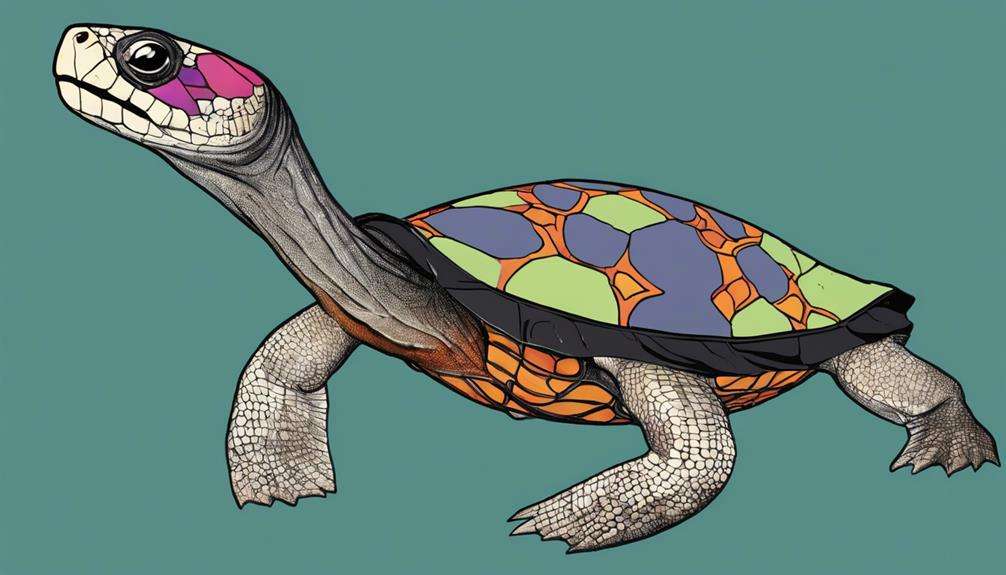
The Chinese Golden Thread Turtle, with its distinctive golden-yellow stripes, shifts to the unique Roti Island Snake-Necked Turtle, known for its snake-like elongated neck, found in the freshwater habitats of Indonesia.
The Roti Island Snake-Necked Turtle, scientifically known as Chelodina mccordi, is a fascinating species native to Indonesia. These turtles are easily recognizable by their long, slender necks that can extend out resembling a snake. Unfortunately, Roti Island Snake-Necked Turtles are facing critical endangerment in the wild primarily due to habitat loss.
Their freshwater habitats, including ponds, streams, and marshes on the island of Roti, are being threatened by human activities such as deforestation and development. Additionally, overcollection for the pet trade has further exacerbated their declining numbers.
Conservation efforts are essential to safeguard and guarantee the survival of the remaining populations of Roti Island Snake-Necked Turtles. Protecting their habitats from further destruction is essential in preventing the extinction of this unique turtle species.
Vietnamese Leaf Turtle
Hailing from the lush landscapes of Vietnam and southeastern China, the Vietnamese Leaf Turtle, scientifically known as Geoemyda spengleri, captivates with its unique leaf-shaped shell and elusive nature. These small turtles are masters of camouflage, often concealing themselves under vegetation and leaf litter to avoid detection. Primarily herbivores, they sustain themselves on a diet of fruits, vegetables, and leafy greens.
Despite their remarkable adaptations, Vietnamese Leaf Turtles face significant threats in the wild. Habitat loss, driven by deforestation and agricultural expansion, poses a severe risk to their survival. Additionally, the collection of these turtles for the pet trade further exacerbates their vulnerable status. As a result, the IUCN Red List categorizes the Vietnamese Leaf Turtle as Vulnerable, highlighting the urgent need for conservation efforts.
Frequently Asked Questions
What Is the Rarest Turtle to Find?
The rarest tortoise to find is the Kemp's Ridley Sea Turtle, a critically endangered species facing threats like habitat loss and pollution. Conservation efforts are essential for their recovery, especially with their unique nesting behaviors.
What Are the 7 Species of Sea Turtles?
Sea turtle migration is a fascinating phenomenon. These ancient travelers navigate vast oceans, guided by Earth's magnetic fields, returning to their birth beaches to lay eggs. Witnessing this journey is a proof of nature's awe-inspiring wonders.
What Turtle Species Is Not Endangered?
You can consider adopting a pet turtle like the Eastern Box Turtle, a species not currently endangered. Its stable population status and unique shell patterns make it an intriguing choice for turtle enthusiasts looking for a conservation-friendly companion.
What Is the Most Beautiful Turtle Species?
You can't deny the allure of the Hawksbill Sea Turtle with its colorful shell resembling tortoiseshell. Its beauty isn't just skin deep; these turtles are crucial for coral reef health, facing threats that need urgent conservation efforts.
Conclusion
You have learned about the diverse lesser-known turtle species available for adoption, each with unique characteristics and conservation needs.
Did you know that the African Helmeted Turtle, one of these species, can live up to 75 years in captivity?
By adopting these turtles, you can contribute to their protection and help guarantee their survival for future generations to enjoy.
Join us in supporting conservation efforts and making a difference in the lives of these fascinating creatures.
